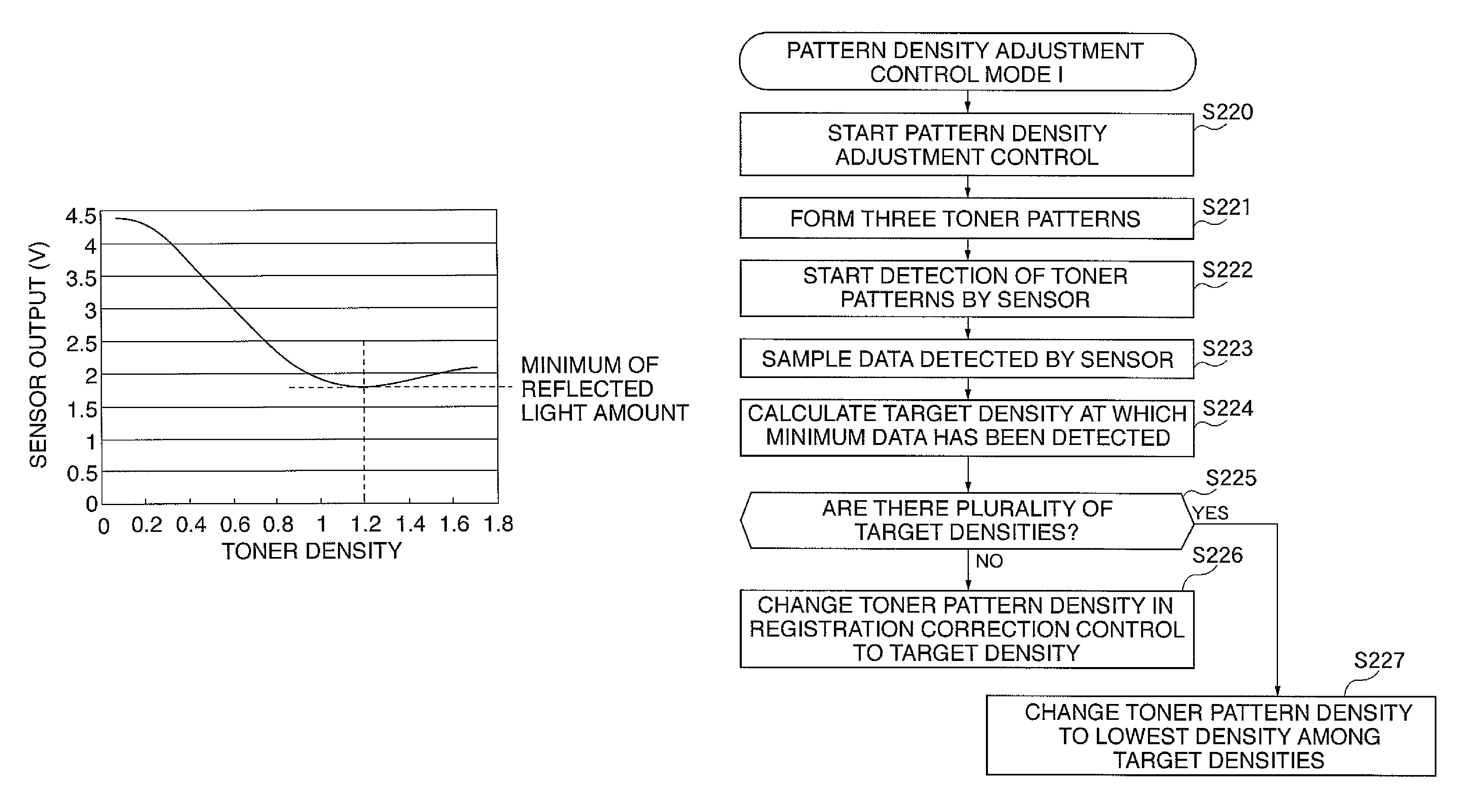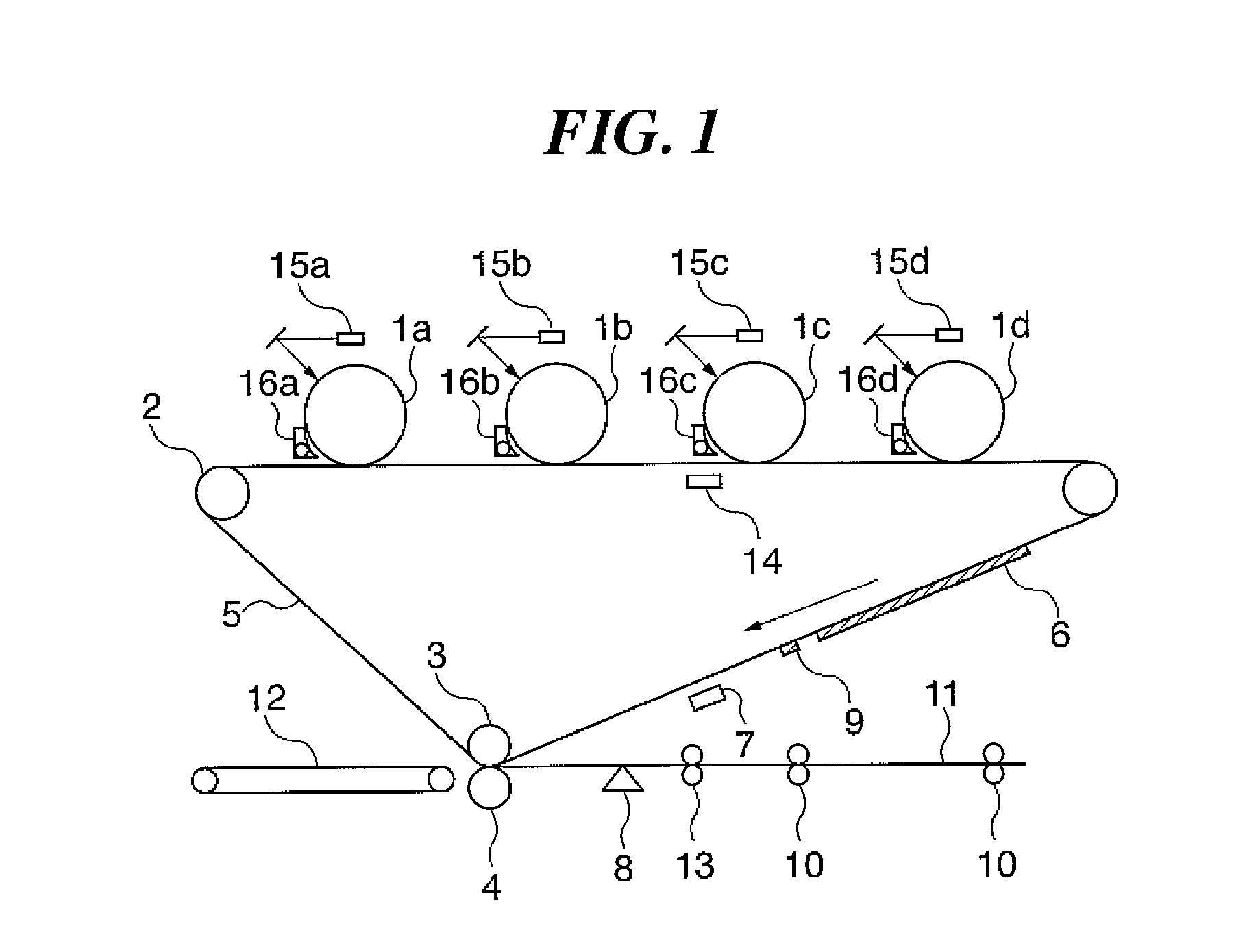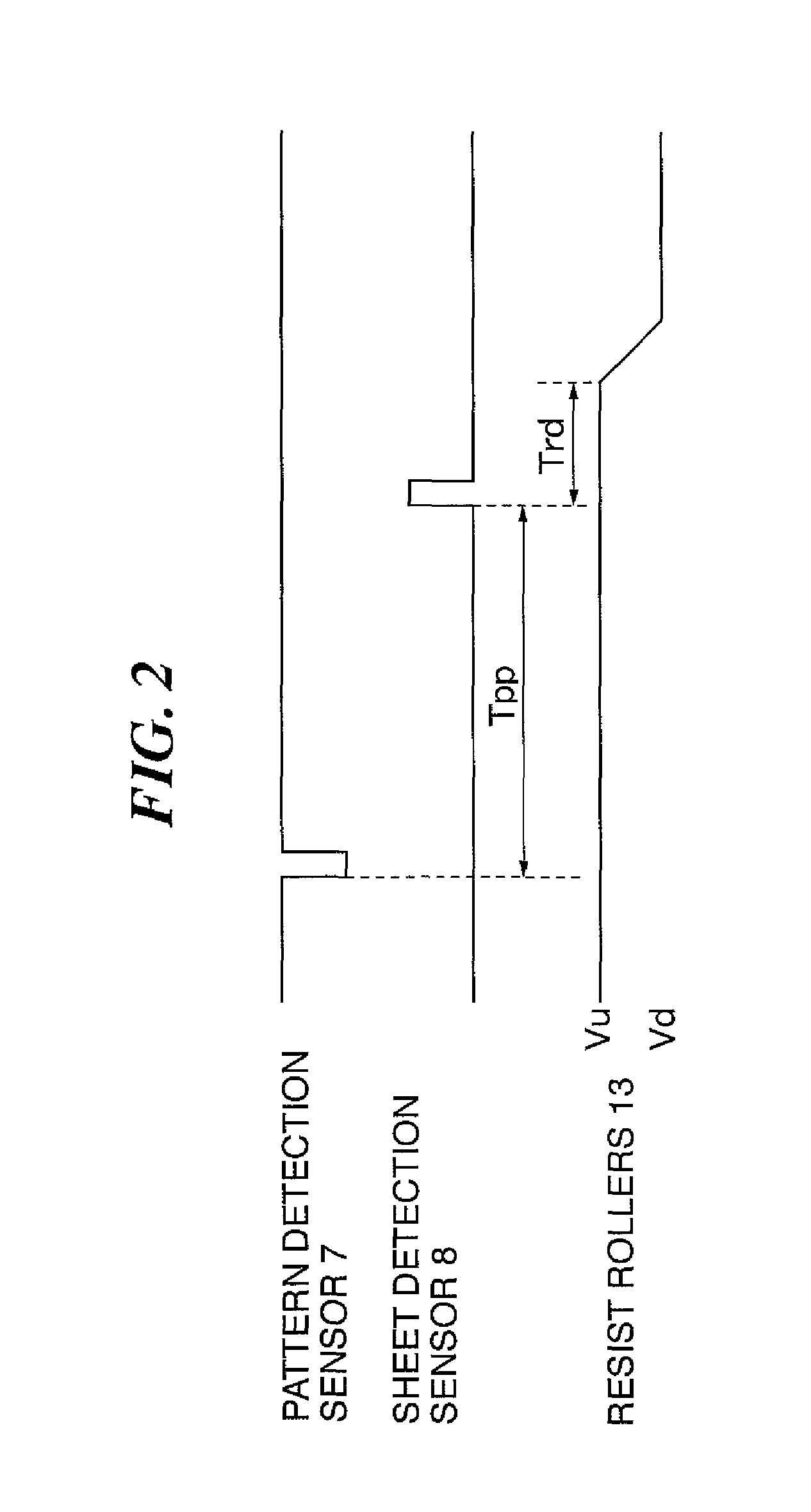Image forming apparatus
a technology of forming apparatus and forming surface, which is applied in the direction of electrographic process apparatus, printing, instruments, etc., can solve the problems of increasing the amount of irregular reflected light in toner pattern detection, lowering the gloss of a base surface due to a difference in reflectivity between sheet surfaces,
- Summary
- Abstract
- Description
- Claims
- Application Information
AI Technical Summary
Benefits of technology
Problems solved by technology
Method used
Image
Examples
first embodiment
[0032]First, with reference to FIGS. 1 to 6, an image forming apparatus according to the present invention will be explained.
[0033]FIG. 1 is a schematic view for explaining the construction of an image forming section of an image forming apparatus according to the first embodiment, and FIG. 2 is a timing chart for explaining basic image-position correction control performed by the image forming apparatus shown in FIG. 1. FIG. 3 is a block diagram schematically showing a control circuit for implementing the image-position correction control, and FIG. 4 is a graph showing a relation between amounts of light irradiated from and received by a pattern detection sensor at a maximum toner pattern density. FIG. 5 is a graph showing a relation between the toner pattern density and the amount of light received by the pattern detection sensor, the relation being observed when the amount of light irradiated from an LED light source is at a maximum. FIG. 6 is a graph showing a relation for each ...
second embodiment
[0059]Next, with reference to FIGS. 7 to 10, an image forming apparatus according to the present invention will be explained.
[0060]FIG. 7 is a block diagram for schematically showing a control circuit of the image forming apparatus of the second embodiment for implementing registration correction control. FIG. 8 is a graph showing a change in received light amount in the detection of toner patterns with five different density levels by the pattern detection sensor. FIG. 9 is a flowchart for explaining an exemplar operation in pattern density adjustment control mode I, and FIG. 10 is a flowchart for explaining an exemplar operation in pattern density adjustment control mode II. It should be noted that the image forming section of the image forming apparatus is the same as that of the first embodiment having been described with reference to FIG. 1, and therefore, explanations thereof will be omitted. The basic control for image-position (registration) correction is the same as that of...
third embodiment
[0090]In the following, with reference to FIGS. 11 to 14, an image forming apparatus according to the present invention will be described.
[0091]FIG. 11 is a block diagram for schematically showing a control circuit of the image forming apparatus of the third embodiment for implementing the registration correction control, and FIG. 12 is a flowchart for explaining an exemplar operation in a pattern density real-time control mode I. FIG. 13 is a graph showing a relation between the drive current of the pattern detection sensor and the toner pattern density, and FIG. 14 is a flowchart for explaining an exemplar operation in a pattern density real-time control mode II. It should be noted that the image forming section of the image forming apparatus is the same as that described with reference to FIG. 1 in the first embodiment, and explanations thereof will be omitted. The basic control for image-position (registration) correction is also the same as that described with reference to FIG....
PUM
 Login to View More
Login to View More Abstract
Description
Claims
Application Information
 Login to View More
Login to View More - R&D
- Intellectual Property
- Life Sciences
- Materials
- Tech Scout
- Unparalleled Data Quality
- Higher Quality Content
- 60% Fewer Hallucinations
Browse by: Latest US Patents, China's latest patents, Technical Efficacy Thesaurus, Application Domain, Technology Topic, Popular Technical Reports.
© 2025 PatSnap. All rights reserved.Legal|Privacy policy|Modern Slavery Act Transparency Statement|Sitemap|About US| Contact US: help@patsnap.com



